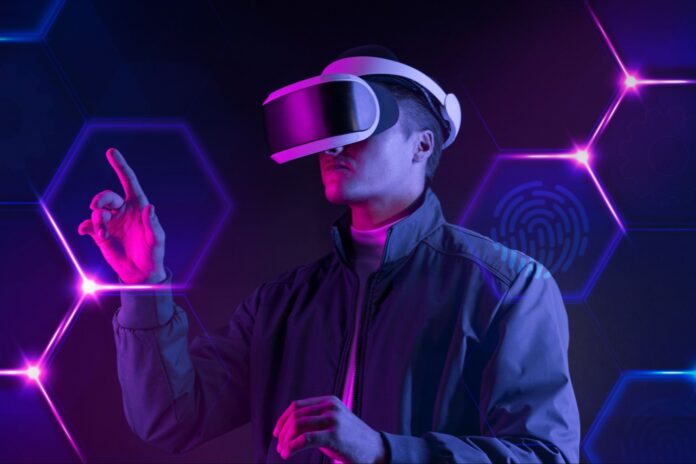Virtual reality (VR) has emerged as a groundbreaking technology that has revolutionized various industries, with gaming being at the forefront of its adoption. By creating an immersive and interactive environment, VR has transformed the way we experience and engage with digital content. However, its influence extends far beyond gaming, permeating fields such as education, healthcare, architecture, and more. In this article, we will delve into the role of virtual reality in gaming and explore its broader implications across different sectors.
Gaming has always been a source of escapism, transporting players into fantastical worlds and allowing them to experience extraordinary adventures. With the advent of virtual reality, this immersion has reached unprecedented levels. VR gaming transcends the boundaries of traditional screens and controllers, enabling users to step into the game itself. Equipped with a headset and motion controllers, players can physically interact with the virtual environment, providing a heightened sense of presence and engagement.
One of the significant advantages of VR gaming is the sense of embodiment it offers. In traditional gaming, players control characters from a third-person perspective, but in VR, they become the character themselves. This embodiment facilitates a deeper connection between the player and the virtual world, leading to a more immersive and emotionally impactful experience. Whether it’s exploring alien planets, engaging in intense sword fights, or solving intricate puzzles, VR gaming has the potential to transport players into entirely new realms of entertainment.
Moreover, VR has opened doors to innovative gameplay mechanics that were previously unimaginable. Motion tracking technology allows players to use their physical movements to control in-game actions. For instance, swinging a virtual tennis racket or throwing a virtual punch becomes an extension of the player’s own body. This level of interactivity adds a new layer of depth to gameplay, enhancing the realism and intensity of virtual experiences.
Beyond gaming, virtual reality has made significant inroads in industries like education and training. VR offers a unique opportunity to simulate realistic scenarios and environments, providing learners with hands-on experiences that would otherwise be costly, dangerous, or impractical. For instance, medical students can practice surgical procedures in a virtual operating room, allowing them to refine their skills without the risk of harming patients. Similarly, pilots can undergo virtual flight training, architects can explore virtual building designs, and astronauts can train for space missions within the safety of a virtual environment.

In the realm of healthcare, VR has proven to be a powerful tool for both diagnosis and treatment. Virtual reality simulations can help doctors and therapists understand and treat various mental health conditions such as phobias, post-traumatic stress disorder (PTSD), and anxiety disorders. By exposing patients to controlled virtual environments that trigger their specific anxieties, therapists can guide them through gradual exposure therapy, leading to desensitization and eventual recovery. VR is also being utilized in pain management, distraction during medical procedures, and physical rehabilitation, demonstrating its potential to improve patient outcomes and quality of care.
Architecture and design professionals have also embraced virtual reality as a means of visualization and collaboration. VR enables architects to create virtual walkthroughs of buildings and environments, allowing clients to experience the design in a more immersive manner. This technology facilitates better communication between architects, clients, and other stakeholders, leading to more informed decision-making and improved design outcomes. By donning a VR headset, users can explore a virtual representation of a future building, assessing its spatial layout, lighting, and aesthetics before any physical construction takes place.
The entertainment industry has witnessed the integration of VR beyond gaming as well. Filmmakers and storytellers are experimenting with virtual reality to create immersive cinematic experiences. VR films transport viewers into the heart of the narrative, allowing them to look around, interact with characters, and feel like active participants in the story. This emerging form of storytelling presents exciting possibilities for the future of cinema and has the potential to redefine the way we consume visual media.
While virtual reality has made significant strides, it still faces certain challenges and limitations. The technology is continuously evolving, and improvements in resolution, comfort, and affordability are necessary to enhance the overall experience. Additionally, VR requires a considerable amount of processing power and relies on a variety of peripherals, which can be barriers to widespread adoption.
However, the potential of virtual reality is undeniable. As the technology continues to advance, it is poised to transform industries, education, healthcare, and entertainment alike. The immersive and interactive nature of VR has the power to reshape the way we learn, play, communicate, and experience the world around us. With ongoing research, development, and innovation, virtual reality holds the promise of unlocking new possibilities and revolutionizing our lives in ways we are only beginning to imagine.

